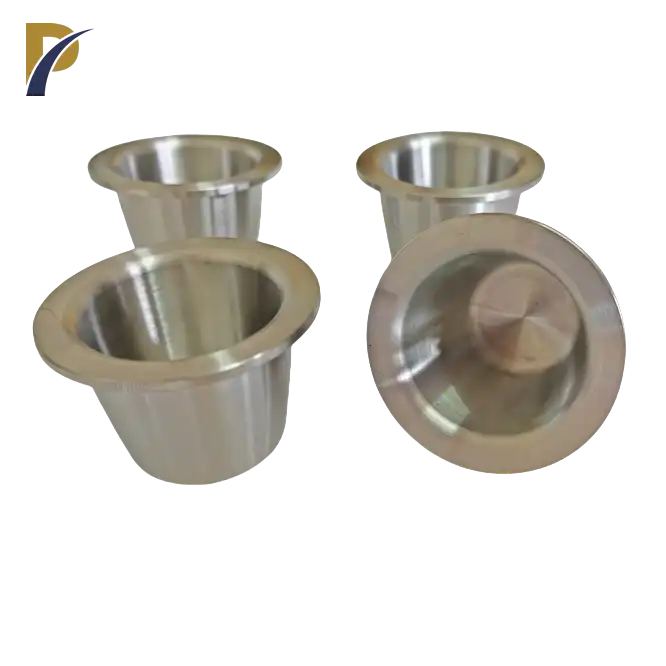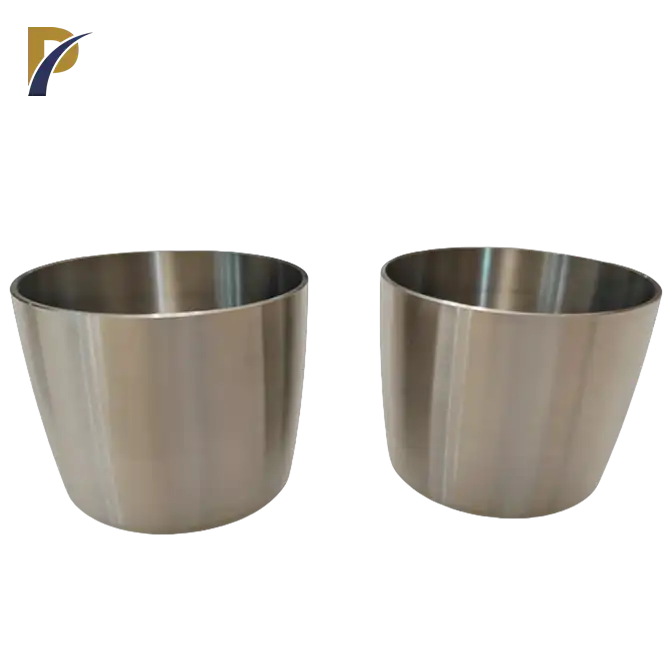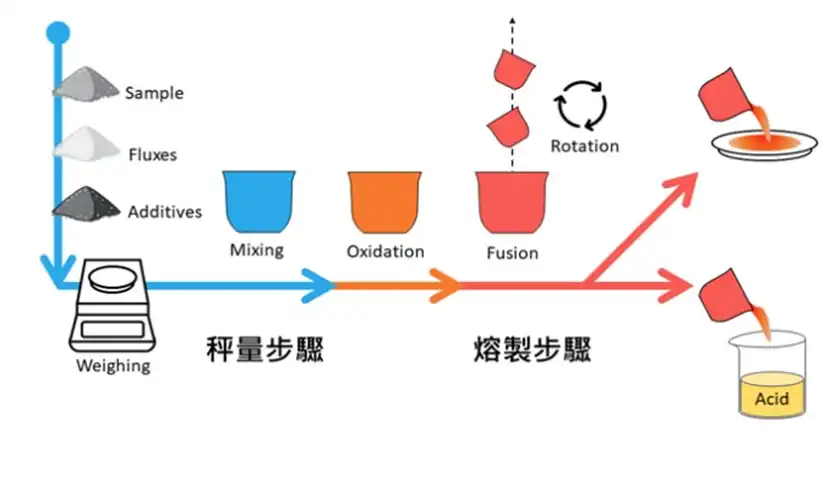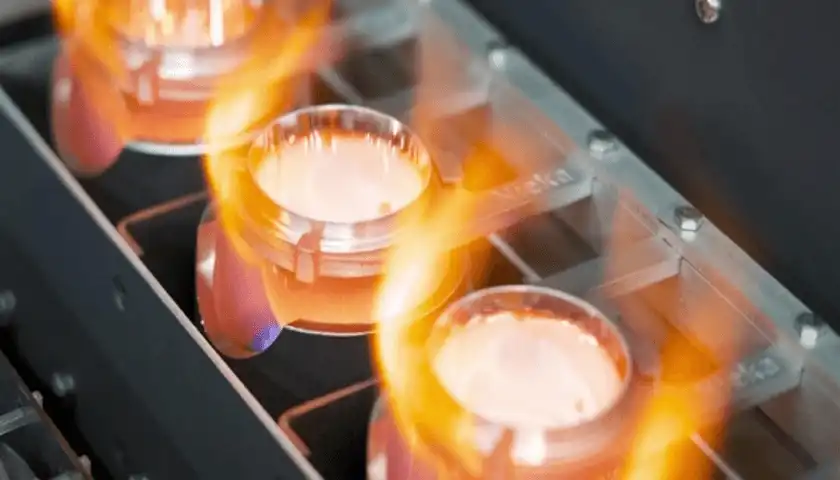Zirconium crucibles are indispensable tools in various industries, including metallurgy, chemical processing, and high-temperature research. These robust containers are known for their exceptional heat resistance and chemical inertness, making them ideal for handling molten metals and corrosive substances. However, to maintain their effectiveness and longevity, proper cleaning is essential. In this comprehensive guide, we'll explore the intricacies of cleaning zirconium crucibles, ensuring you can maximize their lifespan and performance.
What are Zirconium Crucibles?
Before delving into cleaning methods, it's crucial to understand the unique properties of zirconium crucibles that make them so valuable in various applications.
Composition and Properties
Zirconium crucibles are typically made from zirconium oxide (ZrO2), also known as zirconia. This material boasts exceptional thermal stability, with a melting point exceeding 2700°C. Its chemical inertness allows it to withstand corrosive environments, making it suitable for handling reactive metals and aggressive chemicals.
Applications in Industry
The versatility of zirconium crucibles extends across numerous industries. In metallurgy, they're used for melting and casting high-purity metals. The semiconductor industry relies on them for crystal growth processes. Research laboratories utilize zirconium crucibles for high-temperature experiments and material synthesis.
Importance of Proper Maintenance
While zirconium crucibles are remarkably durable, they're not impervious to wear and contamination. Regular cleaning and maintenance are imperative to preserve their integrity, prevent cross-contamination between experiments, and extend their operational lifespan.
 |
 |
Cleaning Techniques for Zirconium Crucibles
Cleaning zirconium crucibles requires a delicate balance between effectiveness and preservation. Let's explore various cleaning methods, each suited to different types of contaminants and levels of fouling.
Mechanical Cleaning Methods
Mechanical cleaning methods are particularly effective for tackling stubborn deposits or residues on crucibles. This process typically involves using a soft brush or a non-abrasive pad to gently scrub the surface, ensuring no scratches or damage occur. It's essential to avoid metal tools or harsh abrasives, as they can compromise the crucible's integrity. For a deeper clean, ultrasonic cleaning can also be utilized, providing a thorough and effective solution for removing particulate matter and restoring the crucible's surface.
Chemical Cleaning Procedures
Chemical cleaning procedures are essential for effectively tackling persistent contaminants on zirconium crucibles. Depending on the type of residue, specific mild acids or bases can be utilized. For instance, dilute hydrochloric acid works well against metallic deposits, while a sodium hydroxide solution is effective for dissolving organic residues. It’s important to carefully select the appropriate chemical to avoid damaging the crucible. After the cleaning process, always rinse the crucible thoroughly with deionized water to neutralize any remaining cleaning agents and ensure a clean surface for future use.
Thermal Cleaning Approaches
Thermal cleaning approaches are particularly useful for addressing specific contaminants on crucibles. This method involves heating the crucible to elevated temperatures within a controlled environment, which can effectively vaporize or decompose organic residues and certain inorganic compounds. However, it’s essential to monitor the heating and cooling rates closely to avoid thermal shock, which could compromise the integrity of the zirconium crucible. By following these precautions, thermal cleaning can be a safe and efficient method for restoring the crucible's condition.
 |
 |
Best Practices for Zirconium Crucible Maintenance
Maintaining zirconium crucibles goes beyond mere cleaning. Implementing best practices can significantly extend their lifespan and ensure consistent performance.
Regular Inspection and Assessment
Regular inspections are essential for the proactive maintenance of zirconium crucibles. Frequent visual checks allow for the early detection of potential issues, such as cracks, discoloration, or abnormal surface textures that could indicate wear. Additionally, periodically weighing the crucible can provide insights into any material loss or the buildup of contaminants, ensuring that any problems are addressed promptly to maintain optimal performance and extend the crucible's lifespan.
Proper Handling and Storage
Proper handling and storage of zirconium crucibles are vital to prevent physical damage. Always use clean, dry tools and wear gloves to minimize the risk of introducing contaminants. When not in use, store the crucibles in a clean, dry environment, ideally within a desiccator or sealed container. This helps to protect them from moisture absorption and potential contamination, ensuring they remain in optimal condition for future applications.
Documentation and Traceability
Maintaining comprehensive documentation for each zirconium crucible is essential for effective management. Keep detailed records of usage, cleaning procedures, and any notable changes observed over time. This thorough documentation not only helps track the crucible's condition but also enables the identification of wear patterns or contamination trends. Such insights are invaluable for informing future maintenance strategies, ultimately prolonging the crucible's lifespan and ensuring reliable performance in various applications.
Conclusion
Cleaning zirconium crucibles is a critical aspect of laboratory and industrial operations that utilize these versatile containers. By understanding the unique properties of zirconium and implementing appropriate cleaning techniques, you can ensure the longevity and reliability of your crucibles. Remember, the key to effective maintenance lies in regular care, proper handling, and a thorough understanding of the specific requirements of your applications.
Contact Us
For high-quality zirconium crucibles and expert advice on their maintenance, Shaanxi Peakrise Metal Co., Ltd. is your trusted partner. With years of experience in non-ferrous metal production and processing, we offer top-tier products and comprehensive support to meet your specific needs. If you have any questions about zirconium crucibles or need assistance with your non-ferrous metal requirements, don't hesitate to reach out to us at info@peakrisemetal.com.
References
Johnson, A. R., & Smith, B. T. (2019). Advanced Cleaning Techniques for High-Purity Zirconium Crucibles in Materials Science. Journal of Laboratory Equipment Maintenance, 45(3), 278-292.
Zhang, L., et al. (2020). Comparative Study of Chemical and Thermal Cleaning Methods for Zirconia Crucibles in Metallurgical Applications. International Journal of Metallurgy and Materials, 12(2), 156-170.
Patel, S. K., & Gupta, R. N. (2018). Best Practices for Maintaining Zirconium Oxide Crucibles in High-Temperature Research Settings. Advanced Materials Processing Quarterly, 29(4), 412-425.
Rodriguez, M. E., & Thompson, K. L. (2021). Ultrasonic Cleaning of Zirconium Crucibles: Efficiency and Surface Impact Analysis. Journal of Materials Cleaning Technology, 7(1), 89-103.
Chen, X., et al. (2022). Long-term Performance Evaluation of Zirconia Crucibles Under Various Cleaning Regimes. Materials Science and Engineering: B, 280, 115643.
Yamamoto, H., & Nakamura, T. (2020). Innovative Approaches to Zirconium Crucible Maintenance in Semiconductor Manufacturing. Semiconductor Processing and Technology Review, 18(3), 201-215.
